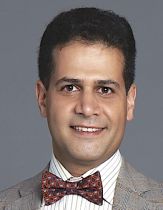Over the past decade, advances in MRI techniques and molecular biology have revolutionized our understanding of brain malformations. During this time, classifications for developmental malformations of the cortex, or those of the midbrain and hindbrain, have undergone a few revisions in light of the evolving understanding of their molecular mechanisms.1,2
In the early part of the past decade, much emphasis was placed on classifying genetic malformations based on the specific gene that was mutated. Therefore, authors grouped diseases from different mutations of the same gene together. For example, mutations of the GFAP gene associated with infantile macrocephaly and other mutations of GFAP associated with spinomedullary degeneration in adults were all classified as Alexander disease.
Despite the values of such classifications, many different genes involved in the same molecular pathway may cause a single clinical disorder. For example, Leigh syndrome could have many different genetic causes all of which result in defective oxidative metabolism and energy production.3,4
On the other hand, different mutations of the same gene could cause different phenotypes (different diseases), because proteins have complex structures with different components participating in different molecular pathways. Therefore, different mutations affecting different structural components of a protein could affect very different pathways and lead to distinct phenotypes.
In addition to different mutations of the same gene, epigenetic factors and environmental factors likely modulate clinical phenotypes, further complicating this tangled web. Therefore, sooner or later neuroscientists will need to reclassify diseases by how each specific mutation or epigenetic modification affects the function of the metabolic pathway(s) involved.
The trend toward reclassifying diseases based on the affected metabolic pathways has been expeditiously on course over the past several years.

